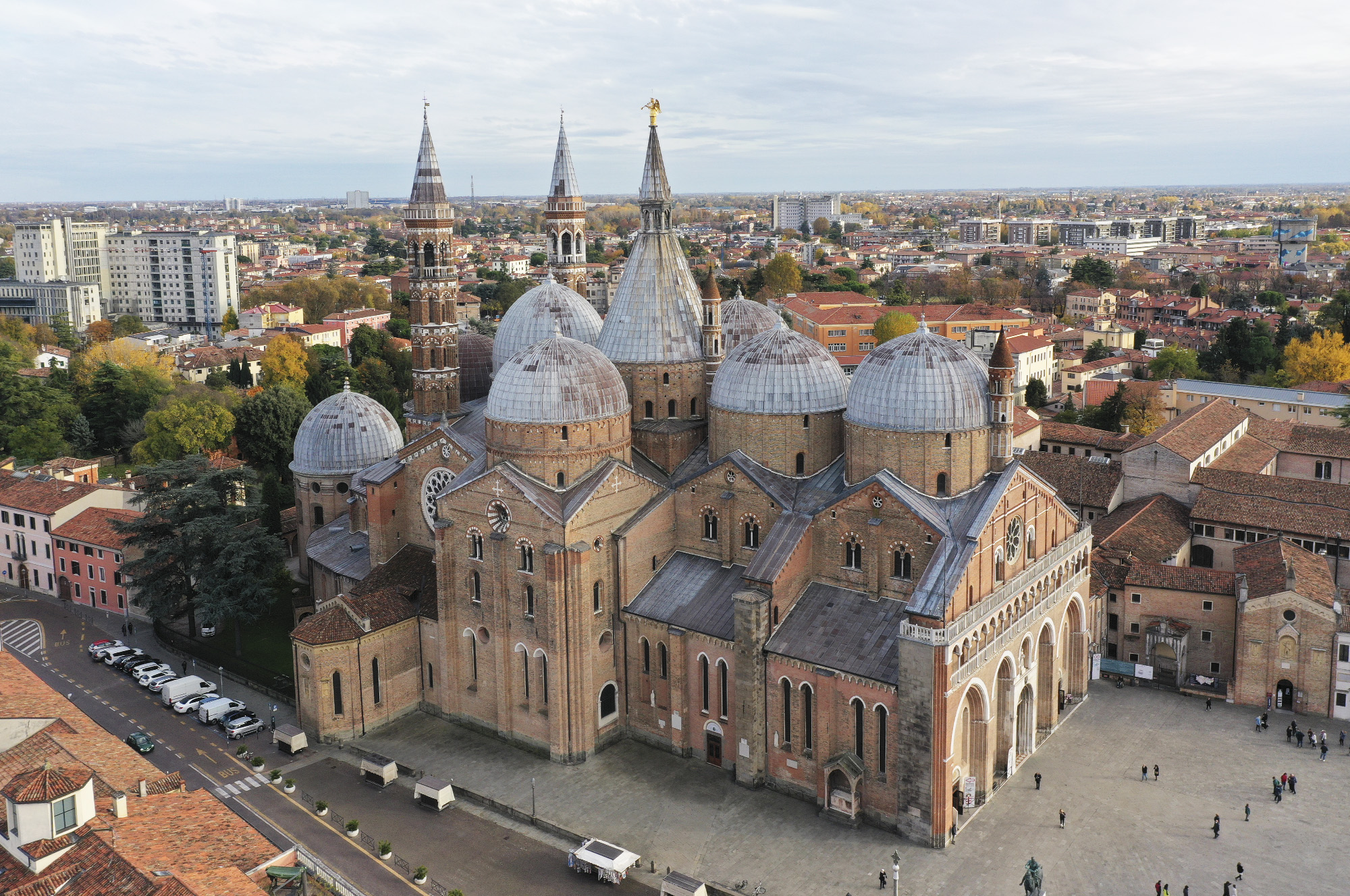The Basilica of St Anthony in Padua
Deciphering the building history of a landmark pilgrimage church
The Basilica of St Anthony in Padua (Veneto) is one of the main pilgrimage site of the 13th and 14th centuries in Italy. The oldest document mentioning the brick church attests to a construction site on the outskirts of Padua in 1238, seven years after the death of the Portuguese-born Franciscan friar (1195–1231). After an initial construction phase between the 1230s and 1260s, the Basilica was swiftly enlarged until the early 14th century to gain its massive silhouette dominated by oriental-style domes, likely inspired by the Basilica of St Mark in Venice.
Despite a large body of art historical research, the early history of the Basilica of St Anthony is largely unknown due to the loss of medieval archives directly related to the construction site. The dating of the individual parts of the current fabric is further complicated by an intricate sequence of collapses, fires, reconstructions and additions, which are partially documented by archives from the 15th century onwards.
Launched in April 2019, the present SNSF project aims at establishing a coherent timeline for the construction of the Basilica using state-of-the-art building archaeology methods and absolute dating techniques. The entire church is surveyed using laser scanning, photogrammetry and thermal imagery. Such techniques provide a precise documentation of the complex brickwork and the timber structures, supporting the analyses of a wide range of construction techniques and the mapping of different building phases. Furthermore, the timber domes are investigated with dendrochronology (in collaboration with the Laboratory Dendrodata, Verona) while the masonries are dated using radiocarbon analyses of mortar samples and organic material (in collaboration with the Laboratory of Ion Beam Physics, ETH Zurich). These findings are systematically confronted to the existing body of research on the Basilica, further contextualized through archival investigations and compared with other edifices. Gradually, this multi-faceted study paves the way for an unequivocal dating of the pilgrimage landmark, together with a finer understanding of medieval building techniques in Northern Italy.
The outcomes of this four-year project will be presented in a new monograph reassessing the exceptional building history of the Basilica of St Anthony, as well as in a doctoral thesis focusing on the eight timber domes.
Current state of the study
Update: July 2022
After three years of intensive on-site research, the project is entering its final stage. The basilica has been surveyed using terrestrial laser scanning, drone photogrammetry and thermal imaging. Various building phases were then dated using dendrochronology and C14 analyses. The latest on-site investigation consisted in a ground penetrating radar survey (in collaboration with the University of Padua) aimed at identifying the appearance of the previous eastern end of the basilica.
In April 2022, Martina Diaz successfully defended a PhD thesis on the timber domes of St Anthony. Her in-depth research into the oldest preserved timber domes of Europe is now available online.
Moreover, our research team has been reinforced by arch. Marius Pfister who is in charge of the graphical representation of the building. The final publication will be available by summer 2023.
Funding and partners
The project is funded by the external page Swiss National Science Foundation and carried out in collaboration with the external page Delegazione Pontificia per la Basilica di S. Antonio in Padova and the external page Veneranda Arca di S. Antonio.
Team
Research Object
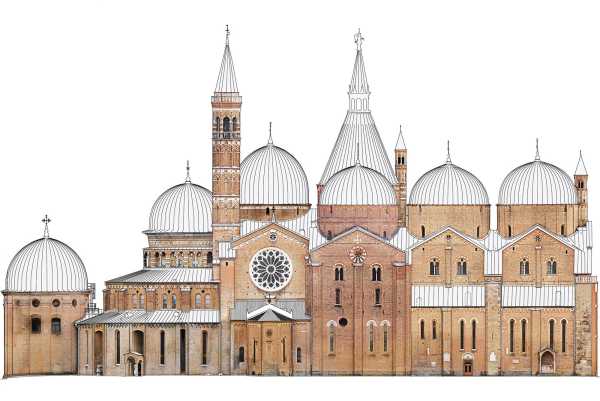 Longitudinal section of the Basilica (drawing: Marius Pfister, Martina Diaz, 2022)
Longitudinal section of the Basilica (drawing: Marius Pfister, Martina Diaz, 2022) Basilica of St Anthony in Padua, north-western view (photo: S. M. Holzer, 2018)
Basilica of St Anthony in Padua, north-western view (photo: S. M. Holzer, 2018)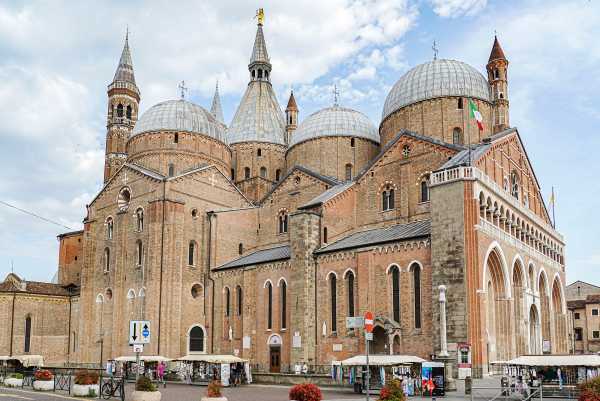 Basilica of St Anthony in Padua, southern view (photo: C. Voigts, 2020)
Basilica of St Anthony in Padua, southern view (photo: C. Voigts, 2020) Nave of the Basilica (photo: C. Knobling, 2019)
Nave of the Basilica (photo: C. Knobling, 2019) Chapel of St Jacob (photo: C. Knobling, 2019)
Chapel of St Jacob (photo: C. Knobling, 2019)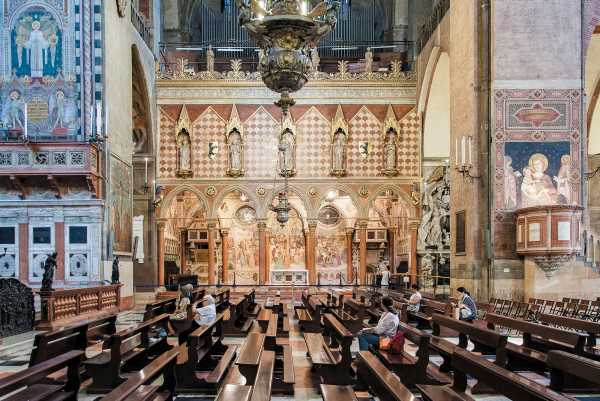 Transept and presbytery (photo: C. Knobling, 2019)
Transept and presbytery (photo: C. Knobling, 2019)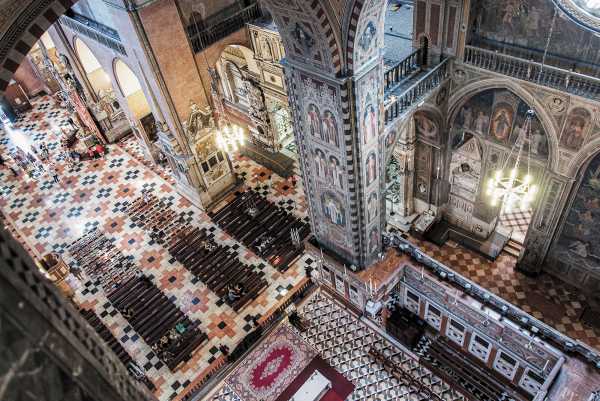 Cross vaults of the ambulatory (photo: C. Knobling, 2019)
Cross vaults of the ambulatory (photo: C. Knobling, 2019)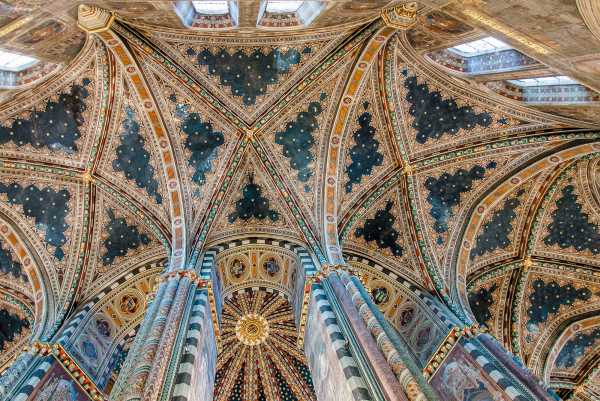 Dome of the Arca, eastern view (photo: C. Knobling, 2019)
Dome of the Arca, eastern view (photo: C. Knobling, 2019) 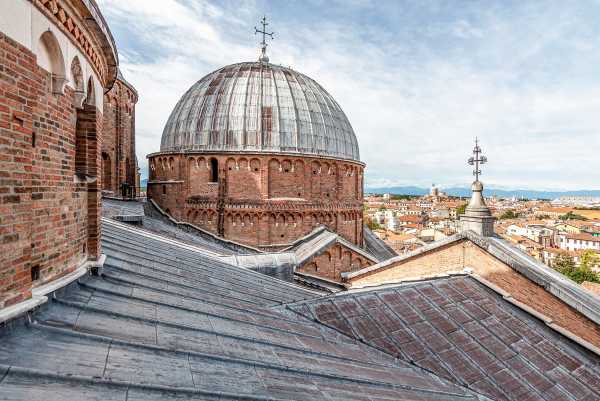 Timber structure in the dome of St Jacob (photo: C. Knobling, 2020)
Timber structure in the dome of St Jacob (photo: C. Knobling, 2020)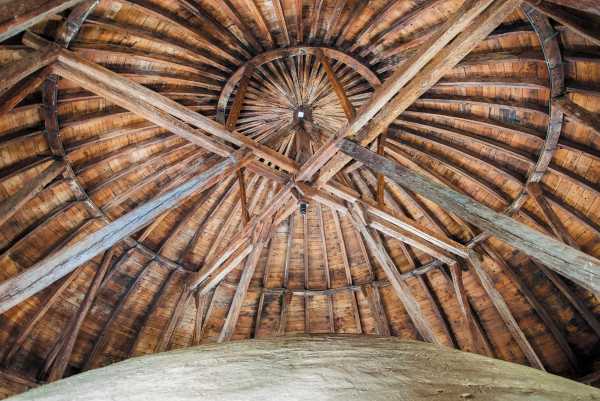 Survey of the southern façades using a laser scanner (photo: L. Vandenabeele, 2020)
Survey of the southern façades using a laser scanner (photo: L. Vandenabeele, 2020)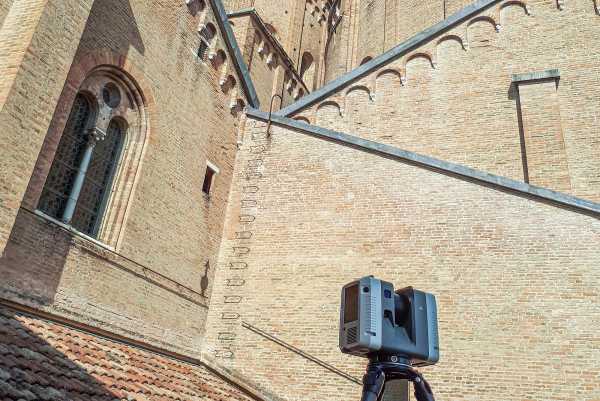 Fire devastating the eastern part of the Basilica on March 29, 1749 (engrav.: Giorgio Fossati, 18th c.)
Fire devastating the eastern part of the Basilica on March 29, 1749 (engrav.: Giorgio Fossati, 18th c.)
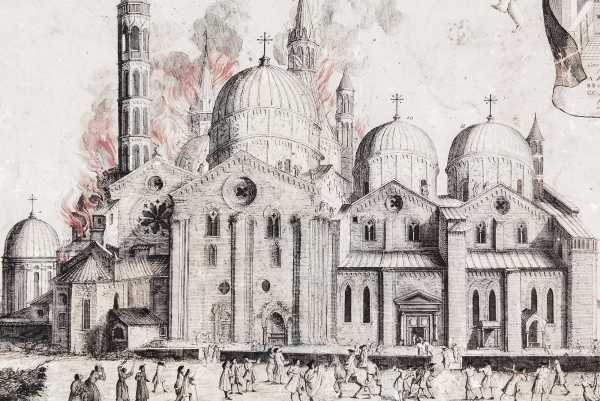
Contact
Deputy head of Inst. Preservation and Constr. History
Bauforschung u.Konstruktionsgesch.
Wolfgang-Pauli-Str. 27
8093
Zürich
Switzerland
